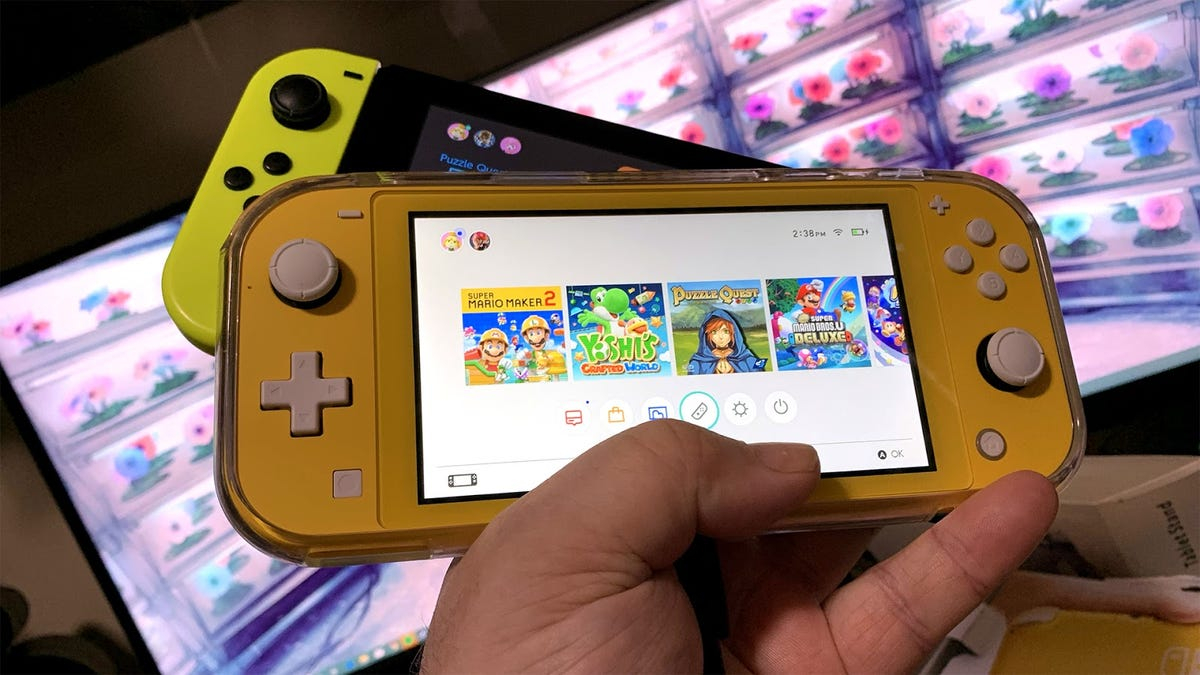Maximizing Your Nintendo Switch Experience: A Guide to Managing Multiple Consoles
With the recent launch of the portable-only Switch Lite, I’ve been navigating the setup of my account across both this new device and my original Switch. This allows my family to enjoy titles like Super Mario Odyssey and Yoshi’s Crafted World without losing any save data or interrupting my gameplay on Puzzle Quest. However, Nintendo’s system presents some challenges. Here’s how we’ve managed to make it work.
The Ideal Setup for Two Consoles
In an ideal world, sharing games between two consoles should be straightforward. I own both a new Lite model and an original Switch purchased back in March 2017, along with a substantial digital game library. My goal is to seamlessly share these games across devices while being able to pause one console and continue on another without hassle.
Navigating Nintendo’s Restrictions
The main hurdle is that Nintendo requires users to have a Nintendo Account for digital purchases. While you can link multiple consoles to one account, only one can be set as the “primary” console at any given time—this limitation creates complications.
Challenges with Non-Primary Consoles
To play games on a non-primary console, it must connect online first for ownership verification. Although you can download content linked to your account on this secondary device, there are restrictions regarding gameplay access when offline or if another console is already in use under that account.
For instance, if I’m engaged in Puzzle Quest on my primary Switch while my wife tries accessing any game via our Lite using my account, she will receive a notification indicating that her game cannot launch because it’s currently active elsewhere. Conversely, if she starts playing first and I attempt to access any title from the primary device afterward, her session will pause with a similar message.
A further limitation arises since non-primary consoles cannot share downloaded games among different user accounts; only users logged into the primary account can access those titles on secondary devices.
Reassessing Primary Console Designation
The initial console that connects with eShop under your user profile becomes designated as your primary system automatically. This means it has unrestricted access to all purchased content without needing internet verification each time you play.
You may change which console holds this status by logging into eShop settings from your current primary device and selecting the option to deactivate it; then simply log into eShop from another Switch for it take over as primary.
The Optimal Configuration Strategy
If you’re managing two systems under one Nintendo Account, designate whichever unit is less likely to have reliable internet connectivity as your primary system—this ensures uninterrupted gaming experiences regardless of online status requirements imposed by non-primary units.
I decided that keeping my original Switch as non-primary would work best since it’s primarily used at home where Wi-Fi is always accessible for online checks before launching games. The more mobile Lite model will serve as our new primary unit so we can enjoy gaming anywhere without needing constant internet connection checks.
A Family-Friendly Solution
This configuration allows anyone using our Lite model—including my wife—to create their own profiles while still accessing all titles associated with our main account effortlessly. If she’s playing her own profile during her sessions on the Lite model when I start up something else on mine later—it won’t interfere! No more interruptions during her bathroom breaks!
Simplifying Save Game Transfers Between Devices
You can manage save files between two consoles but keep in mind this process isn’t automated—it requires manual intervention through either cloud saves or local transfers:
- Cloud Saves: The most convenient method involves utilizing cloud storage options available through Nintendo’s paid online service where users navigate through data management settings selecting “Save Data Cloud” followed by downloading relevant backups matching timestamps of local saves.
- Local Transfers: For titles lacking cloud support transfers must occur locally via short-range wireless connections requiring proximity between source/destination devices; however note these are irreversible processes meaning once moved—the original save file gets deleted.
A Cautionary Note About Local Transfers
I learned this lesson firsthand after transferring over 20 hours’ worth of progress from Puzzle Quest onto our Lite only for someone else (my wife) starting fresh effectively wiping out everything I’d accomplished! Always plan ahead!
An Alternative Approach: Opting For Physical Copies
If sharing becomes too cumbersome consider purchasing physical copies instead whenever feasible! Unlike digital downloads which necessitate various verifications—a cartridge allows immediate accessibility across multiple accounts anytime!
Maybe I’ll swing by local retailers soon before losing even more progress!
